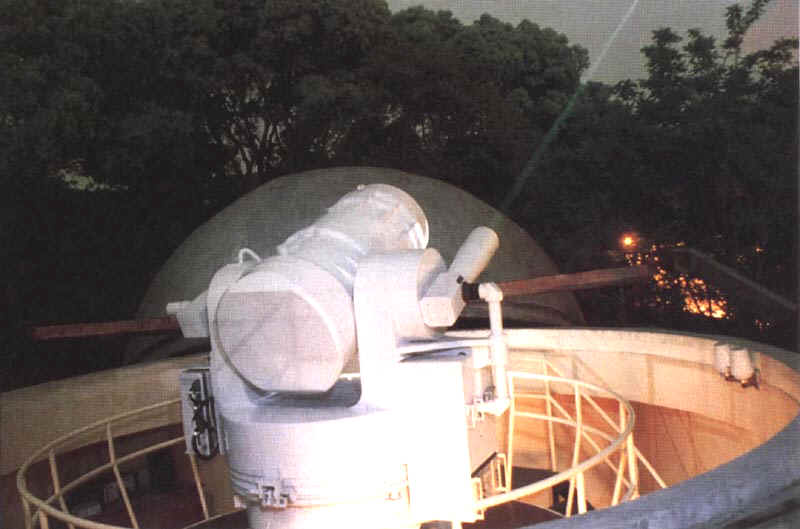
Research topics
1. Improvement of Satellite Laser Ranging (SLR) techniques both in ranging accuracy and system automation.
2. Applications of SLR techniques mainly to:
·The monitoring of movements of the Earth’s center of mass, and temporal variations of the gravitational field.
·Time transfer by laser pulses between satellites and ground stations, and among distant ground stations worldwide.
Status of the SLR System at SHAO and Changchun Observatories • Ranging precision : Single shot 10-15mm(rms)
Normal point 5-8mm
The SLR system at SHAO first achieved 7-8mm(single shot rms) with a pico-event-timer in August of 2001.
• Maximum ranging: 20000km
• Data quantity from routine observations:
The Chinese SLR Network
• Consists of 5 fixed stations: Shanghai,Changchun,Beijing,Wuhan and Kuming; and 2 mobile stations.
• Observing plans, technical standards, and technical upgrades are coordinated by SHAO.
• The data analysis center is located at SHAO.
SHAO publishes Lageos data analysis reports weekly on the web. SHAO is also involved in carrying out SLR data analysis for research on astro-geodynamics and geodesy.
The international SLR network
There are presently about 50 SLR stations around the world, and the International Laser Ranging Service (ILRS) was established in November of 1998. The Central Bureau of ILRS is located at NASA/GSFC.
The scientific applications of SLR techniques
• Determination of the geocentric coordinates of SLR stations worldwide, and establishment of a global terrestrial reference frame.
• Measurement of the baselines between SLR stations, their variations, and the monitoring of crustal movements.
• Measurement of the gravitational field of the Earth, variations in its center of mass, and determination of the Earth’s rotational parameters.
• Accurate determination of the space positions and orbits of satellites, and to give support to a range of scientific satellite missions.
The SHAO and Changchun SLR stations have participated or are participating in the following projects:
Domestic projects:
• National climb project in basic research “Modern crustal movement and geodynamic research”, 1992-2002
• National key project “The crustal movement observaion network of China ”, 1997-2001
• Development of the laser reflector array for the Shenzhou orbital module and laser ranging experiment, 1999-2003
• Development of the reflector array for the Shenzhou orbital module
Leading Professor: Zhongping Zhang Group Members:
Faculty: Juping Chen(engineer), Pu Li(assistant engineer), Wendong Meng(assistant engineer), Dongju Peng(assistant professor), Bin Wu(professor), Zhibo Wu(assistant engineer), Fumin Yang(professor), Yong Zhang, Zhongping Zhang(professor), Shanshi Zhou |